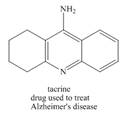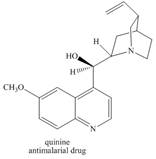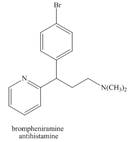
Organic Chemistry
4th Edition
ISBN: 9780073402772
Author: Janice G. Smith
Publisher: MCG
expand_more
expand_more
format_list_bulleted
Concept explainers
Textbook Question
Chapter 25, Problem 25.25P
Which
a.  b.
b.  c.
c. 
Expert Solution & Answer
Want to see the full answer?
Check out a sample textbook solution
Students have asked these similar questions
These are in the wrong boxes. Why does the one on the left have a lower molar mass than the one on the right?
SYNTHESIS REACTIONS. For the following reactions, synthesize the given products from the given reactants.
Multiple reactions/steps will be needed. For the one of the steps (ie reactions) in each synthesis, write out the
mechanism for that reaction and draw an energy diagram showing the correct number of hills and valleys for
that step's mechanism.
CI
b.
a.
Use acetylene (ethyne)
and any alkyl halide as
your starting materials
Br
C.
d.
"OH
OH
III.
OH
Calculate the pH and the pOH of each of the following solutions at 25 °C for which the substances ionize completely:
(a) 0.200 M HCl
Chapter 25 Solutions
Organic Chemistry
Ch. 25 - Prob. 25.1PCh. 25 - Draw the structure of a compound of molecular...Ch. 25 - Prob. 25.3PCh. 25 - Prob. 25.4PCh. 25 - Prob. 25.5PCh. 25 - Arrange the compounds in order of increasing...Ch. 25 - Prob. 25.7PCh. 25 - Prob. 25.8PCh. 25 - Problem 25.7
Draw the product of each...Ch. 25 - Prob. 25.10P
Ch. 25 - Prob. 25.11PCh. 25 - Prob. 25.12PCh. 25 - Prob. 25.13PCh. 25 - Prob. 25.14PCh. 25 - Prob. 25.15PCh. 25 - Prob. 25.16PCh. 25 - Prob. 25.17PCh. 25 - Prob. 25.18PCh. 25 - Draw the products of each acidbase reaction....Ch. 25 - Prob. 25.20PCh. 25 - Prob. 25.21PCh. 25 - Prob. 25.22PCh. 25 - Prob. 25.23PCh. 25 - Problem 25.22
Which nitrogen atom in each compound...Ch. 25 - Which N atom in each drug is more basic? a. b. c.Ch. 25 - Prob. 25.26PCh. 25 - Prob. 25.27PCh. 25 - Prob. 25.28PCh. 25 - Prob. 25.29PCh. 25 - Prob. 25.30PCh. 25 - Problem 25.28
Draw the major product formed in...Ch. 25 - Prob. 25.32PCh. 25 - Prob. 25.33PCh. 25 - Problem 25.31
Devise a synthesis of each compound...Ch. 25 - Prob. 25.35PCh. 25 - Problem 25.33
What starting materials are needed...Ch. 25 - Problem 25.34
(a) What two components are needed...Ch. 25 - Prob. 25.38PCh. 25 - Prob. 25.39PCh. 25 - Prob. 25.40PCh. 25 - 25.37 Varenicline (trade name Chantix) is a drug...Ch. 25 - Prob. 25.42PCh. 25 - Prob. 25.43PCh. 25 - Prob. 25.44PCh. 25 - Prob. 25.45PCh. 25 - Prob. 25.46PCh. 25 - Prob. 25.47PCh. 25 - Prob. 25.48PCh. 25 - Decide which N atom in each molecule is most basic...Ch. 25 - 25.44 Rank the nitrogen atoms in each compound in...Ch. 25 - 25.45 Explain why nitroaniline is a stronger base...Ch. 25 - 25.46 Explain the observed difference in the...Ch. 25 - 25.47 Why is pyrrole more acidic than...Ch. 25 - How would you prepare 3-phenyl-1-propanamine...Ch. 25 - Prob. 25.55PCh. 25 - Prob. 25.56PCh. 25 - Prob. 25.57PCh. 25 - Prob. 25.58PCh. 25 - 25.51 How would you separate toluene , benzoic...Ch. 25 - 25.52 Draw the products formed when methylaniline ...Ch. 25 - Prob. 25.61PCh. 25 - Prob. 25.62PCh. 25 - Prob. 25.63PCh. 25 - Prob. 25.64PCh. 25 - Prob. 25.65PCh. 25 - Prob. 25.66PCh. 25 - Prob. 25.67PCh. 25 - Prob. 25.68PCh. 25 - 25.60 A chiral amine A having the configuration...Ch. 25 - 25.61 Draw a stepwise mechanism for each...Ch. 25 - 25.62 Draw a stepwise mechanism for the following...Ch. 25 - Prob. 25.72PCh. 25 - Tertiary (3) aromatic amines react with NaNO2 and...Ch. 25 - Prob. 25.74PCh. 25 - Devise a synthesis of each compound from benzene....Ch. 25 - Prob. 25.76PCh. 25 - Prob. 25.77PCh. 25 - Prob. 25.78PCh. 25 - Prob. 25.79PCh. 25 - Synthesize each compound from benzene. Use a...Ch. 25 - Prob. 25.81PCh. 25 - Devise a synthesis of each compound from benzene,...Ch. 25 - Prob. 25.83PCh. 25 - 25.72 Three isomeric compounds A, B, and C, all...Ch. 25 - 25.73 Treatment of compound D with LiAlH4 followed...Ch. 25 - Prob. 25.86PCh. 25 - 25.75 Rank the following compounds in order of...Ch. 25 - Prob. 25.88PCh. 25 - Prob. 25.89PCh. 25 - Prob. 25.90P
Knowledge Booster
Learn more about
Need a deep-dive on the concept behind this application? Look no further. Learn more about this topic, chemistry and related others by exploring similar questions and additional content below.Similar questions
- Calculate the pH and the pOH of each of the following solutions at 25 °C for which the substances ionize completely: (a) 0.000259 M HClO4arrow_forwardWhat is the pH of a 1.0 L buffer made with 0.300 mol of HF (Ka = 6.8 × 10⁻⁴) and 0.200 mol of NaF to which 0.160 mol of NaOH were added?arrow_forwardDetermine if the following salt is neutral, acidic or basic. If acidic or basic, write the appropriate equilibrium equation for the acid or base that exists when the salt is dissolved in aqueous solution. If neutral, simply write only NR. Be sure to include the proper phases for all species within the reaction. NaN₃arrow_forward
- A. Draw the structure of each of the following alcohols. Then draw and name the product you would expect to produce by the oxidation of each. a. 4-Methyl-2-heptanol b. 3,4-Dimethyl-1-pentanol c. 4-Ethyl-2-heptanol d. 5,7-Dichloro-3-heptanolarrow_forwardWhat is the pH of a 1.0 L buffer made with 0.300 mol of HF (Ka = 6.8 × 10⁻⁴) and 0.200 mol of NaF to which 0.160 mol of NaOH were added?arrow_forwardCan I please get help with this.arrow_forward
- Determine if the following salt is neutral, acidic or basic. If acidic or basic, write the appropriate equilibrium equation for the acid or base that exists when the salt is dissolved in aqueous solution. If neutral, simply write only NR. Be sure to include the proper phases for all species within the reaction. N₂H₅ClO₄arrow_forwardPlease help me with identifying these.arrow_forwardCan I please get help with this?arrow_forward
arrow_back_ios
SEE MORE QUESTIONS
arrow_forward_ios
Recommended textbooks for you
 Organic Chemistry: A Guided InquiryChemistryISBN:9780618974122Author:Andrei StraumanisPublisher:Cengage Learning
Organic Chemistry: A Guided InquiryChemistryISBN:9780618974122Author:Andrei StraumanisPublisher:Cengage Learning

Organic Chemistry: A Guided Inquiry
Chemistry
ISBN:9780618974122
Author:Andrei Straumanis
Publisher:Cengage Learning
General Chemistry | Acids & Bases; Author: Ninja Nerd;https://www.youtube.com/watch?v=AOr_5tbgfQ0;License: Standard YouTube License, CC-BY